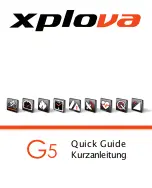
77
headSet
The headset
(a)
connects the fork to the frame, but allows it to move
freely. It must turn with virtually no resistance, if the bicycle is to run
straight, stabilising itself as it travels. The shocks caused by uneven
road surfaces expose the headset to considerable levels of stress. In
this way it can become loose and go out of correct adjustment.
G
Riding the bicycle with a loose headset greatly increases
the stress on the fork and the bearings. This can lead to
damage to the fork.
danger of an accident!
CHECKING AND READjUSTING
Check the headset for play by placing your fingers around the upper
head tube race
(b)
.
Bring your weight to bear on the saddle, pull the front brakes with your
other hand and push the WHEELER bicycle firmly back and forth with
the wheel remaining on the ground
(c)
. If the bearing has play, you will
feel the upper head tube race moving in jerks relative to the lower head
tube race - visible as a small gap in between the head tube races.
To check whether the headset bearings run smoothly, lift the frame
up until the front wheel no longer touches the ground. The handlebars
should turn from far left to far right without any noticeable roughness or
tightness at any point
(d)
. With a gentle tap on the handlebars the fork
should turn easily from the middle position.
If the test cannot be carried out smoothly, contact your WHEELER bi-
cycle dealer.
G
Adjusting the headset requires a certain amount of experi-
ence and should therefore be left to your WHEELER bicycle
dealer.
G
Check the secure seating of the stem after adjusting the
headset by taking the front wheel between your legs and
trying to turn the handlebars and stem relative to the wheel.
otherwise, a loose stem can cause an accident.
THREADLESS HEADSET – AHEADSET
®
(Aheadset
®
is a registered trade mark of Dia-Compe)
This headset system is characterised by the fact that the stem is not
in the fork steerer tube but clamps it from outside. Hence the stem is
an important constituent part of the headset, clamping it therefore also
sets the adjustment. You generally only need one or two Allen keys and
a torque wrench to adjust an Aheadset
®
.
Undo the stem clamping screw(s) at the side of the stem by one or two
turns
(e)
. Slightly turn the upper countersunk adjusting screw with an
Allen key
(f)
, for example, a quarter turn.
Align the stem so that the handlebars are not slanted. To do so, make
sure the top tube and stem are in a line with the front tyre. Tighten
up the stem clamping screws. Use a torque wrench and never exceed
the maximum torque values! You can find these in the chapter
“re-
commended torque Settings for components”
, on the components
themselves and/or in the instructions from the parts manufacturers,
which you can find on the enclosed CD.
Check the bearing play as described above
(g)
. The bearings may not
be done up too tightly or they will be destroyed quickly.
g
Note that the stem can press the fork steerer tube if the
screws are done up too tightly. In particular, models with a
carbon fork steerer tube react very sensitively to overload-
ing as a result of overtightening the shaft clamp at the stem.
risk of breakage!
Follow the instructions for adjustment
given by the manufacturer of the carbon forks, which are on
the enclosed CD, if you make any changes to the headset
or stem.
g
Check the secure seating of the stem by taking the front
wheel between your legs and trying to turn the handlebars
and stem relative to the wheel
(h)
. otherwise, a loose stem
can cause an accident.
g
Never change the preloading mechanism in the inside of the
fork steerer tube. Never install a star nut.
a
Do not tighten up the screw at the top; this is only used to
set the play of the bearings.
i
There can be several reasons why the bearings cannot be
adjusted. If you are in doubt or if you have any questions,
then contact your WHEELER bicycle dealer.
a
b
c
d
76
e
f
g
h
Summary of Contents for Cross
Page 70: ......
















































